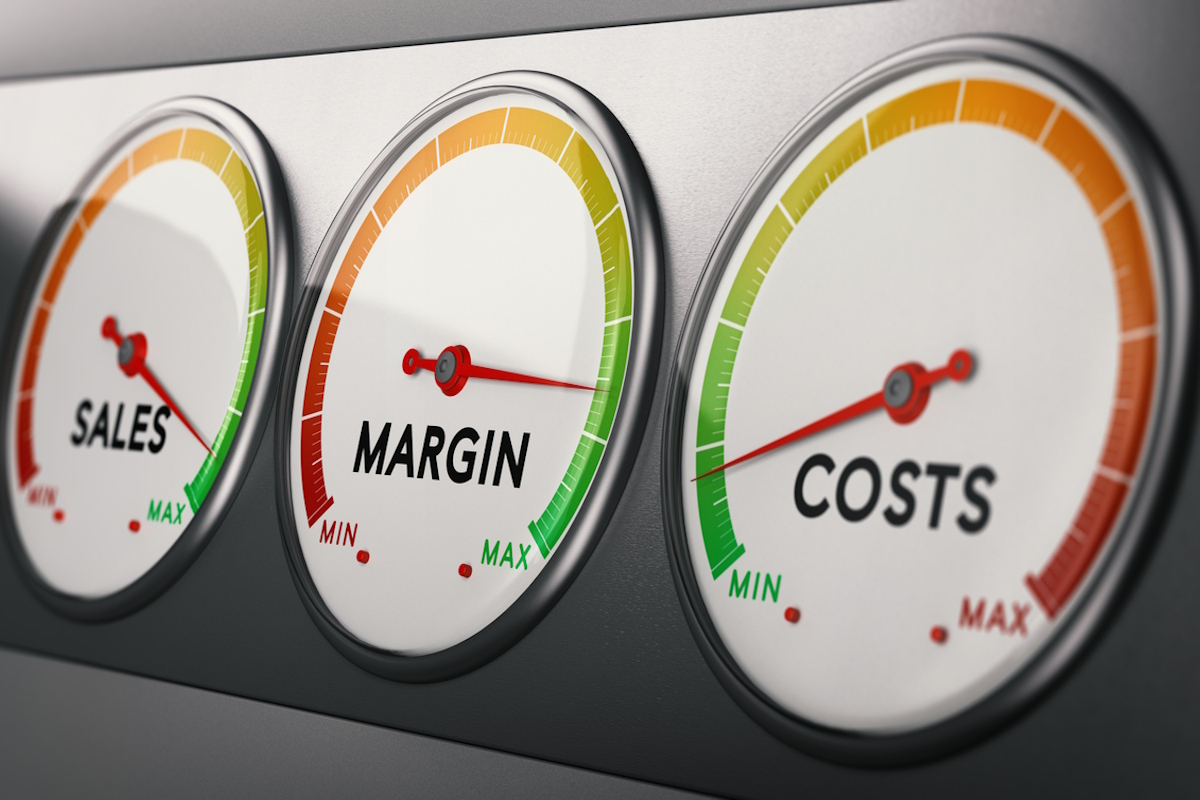Demystifying and preventing margin erosion

Ronan Kerouedan at Coupa explains the root causes of margin erosion and the strategies that finance leaders should adopt to prevent it and protect the business
The economic environment in recent years has been increasingly challenging and competitive. From inflation and political instability, to supply chains that are still feeling the pandemic’s aftershocks, businesses have been navigating a growing list of pressures and battling economic headwinds, all while trying to find ways to drive growth within their business.
Every project is under intense scrutiny. Adding to the complex web of challenges, the strategies and models that grew margins in the past no longer work. All of this has made companies more cautious, leading them to cut costs and closely monitor spending. But this caution, coupled with the shifting market dynamics, breeds another challenge, one that is intensifying, and that is margin erosion.
The margin erosion zone refers to the gradual decline in profitability of a business over time. The margin erosion zone is a critical concern for businesses as it directly affects their bottom line and viability. Nearly every company is susceptible to the margin erosion zone and as the challenge increasingly grows, it is essential for finance leaders to understand what it is, what they can control and how they can prevent it or break free from it.
Getting to the root of the problem
When we think about good profit margins it isn’t always one-size-fits, we have to consider the industry, operating expenses, and business goals. While there is no magic margin number, comparing to industry peers can provide a solid benchmark for business success. Ideally, a business’s margins should match or surpass those of competitors in the industry.
However, we know that for most businesses, macroenvironment challenges are impacting their margins. These concerns were highlighted in Coupa’s recent research report which found that 90% of global CFOs are concerned that their organisation will not hit revenue forecasts.
The longer these challenges are left unaddressed, the greater their impact, causing a compounding effect.
But it is not solely external factors that finance leaders are managing. Internal factors can also cause a decline in margins. Outdated IT systems, along with siloed and complicated processes, like manual payments and invoice and expense report approval cycle times, all have a role to play when it comes to a company’s profitability.
The impact of margin erosion on businesses can be detrimental. With direct links to profit reduction, operational strain, and stalling growth, CFOs are under increasing pressure to control costs while maintaining quality and avoiding essential resource cuts, like the workforce.
Faced with costs that increase faster than revenue and less capital for innovation and growth investment, a business’s competitive advantage is likely to take a significant hit – leaving room for more agile competitors to sweep in.
How to protect and defend against margin erosion
Short-term solutions will not prevent margin erosion; however, it is not completely insurmountable. To bridge this gap, businesses need to evaluate their spend management, making seemingly ‘small’ changes which cumulatively create a significant impact.
There are five key margin-multiplying areas businesses can focus on to boost their profitability; efficiency, productivity, sustainability, resiliency, and growth. Each area reinforces the other. Strengthening efficiency through streamlining procurement and supplier processes helps to reduce overall operational costs, creating an efficiency multiplier. The knock-on effect is an increase in productivity, as automating tasks helps to free up finance teams to focus on more strategic work, creating a productivity multiplier.
Simultaneously, achieving ESG/DEI goals and reducing carbon footprint through identifying the right suppliers to optimise supply chains creates a sustainability multiplier. This same commitment to sustainability strengthens business resilience against external pressures. When disruption hits, a resilience multiplier helps to mitigate business continuity risk.
Finally, growth comes from increasing cash flow. In markets with thin margins and low growth environments, growth comes from smarter financial decision-making and margin control. The growth multiplier is a direct cumulative effect of all the multipliers.
Integrating Artificial Intelligence across these key areas also makes margin multiplication possible. AI enhances each of their individual impacts and allows finance leaders to confidently drive better decisions and outcomes in a complex, and sometimes volatile, environment. However, AI is only as good as the data it is built on. AI systems trained on low-quality data will inevitably reflect these limitations and do little to bridge the margin erosion gap.
Expanding margins and driving profitability
For those wondering where to begin, the important questions to ask are ‘what are our goals as an organisation?’ and ‘what internal changes do we need to make in order to start measuring and tracking them?’ Between how organisations need to perform versus how they are actually performing, ensuring that the margin erosion zone is tackled before the gap gets wider.
Total spend management presents a sustainable, reliable, and comprehensive approach to ensuring profitable growth. As the economy, consumer spending habits, and sales forecasts remain unpredictable, financial leaders are turning to what they can control – processes and technology. The result? A rapid return on investment that aligns perfectly with strategic objectives, seizes competitive advantages, and propels sustainable growth.
Ronan Kerouedan is SVP Solutions Consulting at Coupa
Main image courtesy of iStockPhoto.com and Olivier Le Moal

Business Reporter Team
Most Viewed
Winston House, 3rd Floor, Units 306-309, 2-4 Dollis Park, London, N3 1HF
23-29 Hendon Lane, London, N3 1RT
020 8349 4363
© 2024, Lyonsdown Limited. Business Reporter® is a registered trademark of Lyonsdown Ltd. VAT registration number: 830519543





